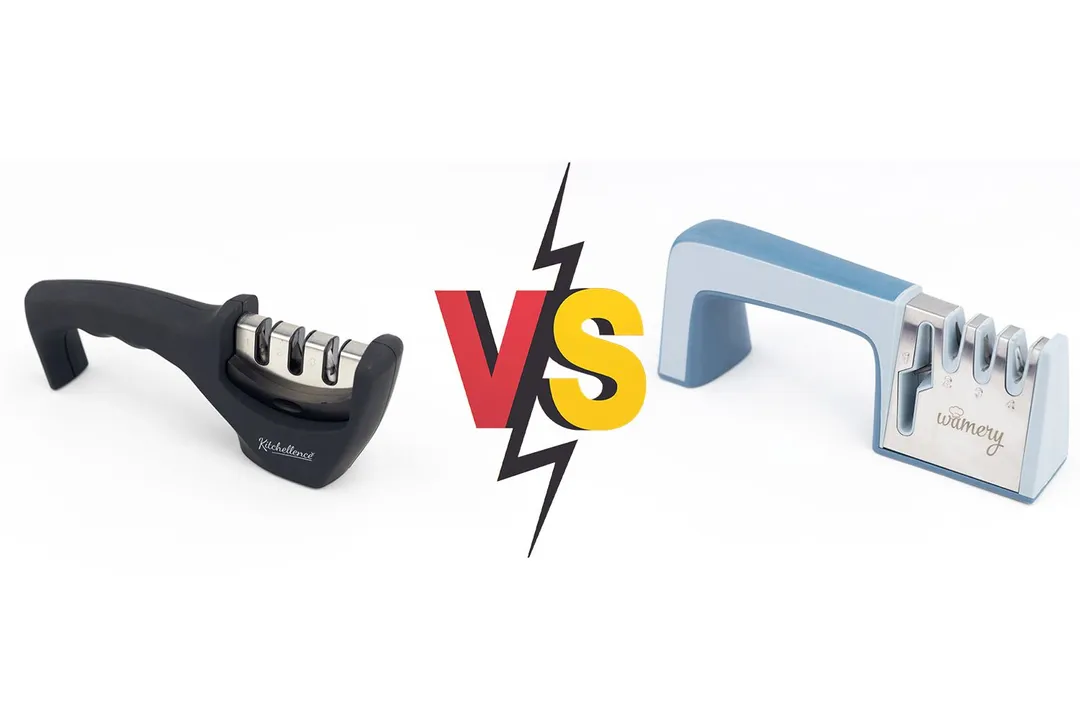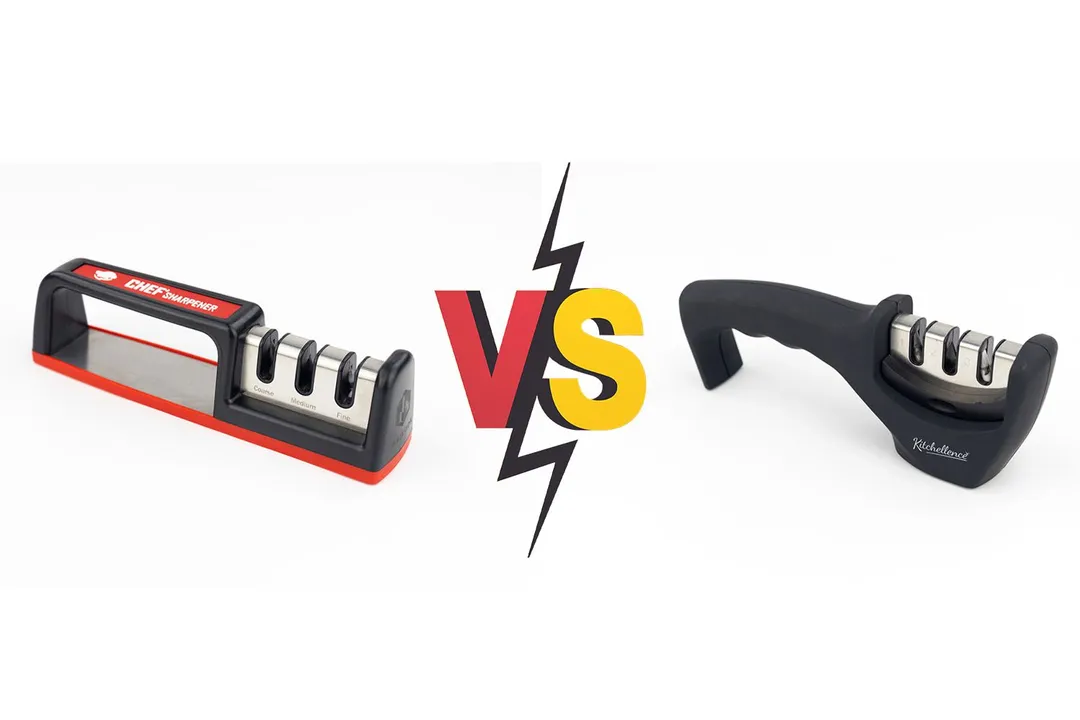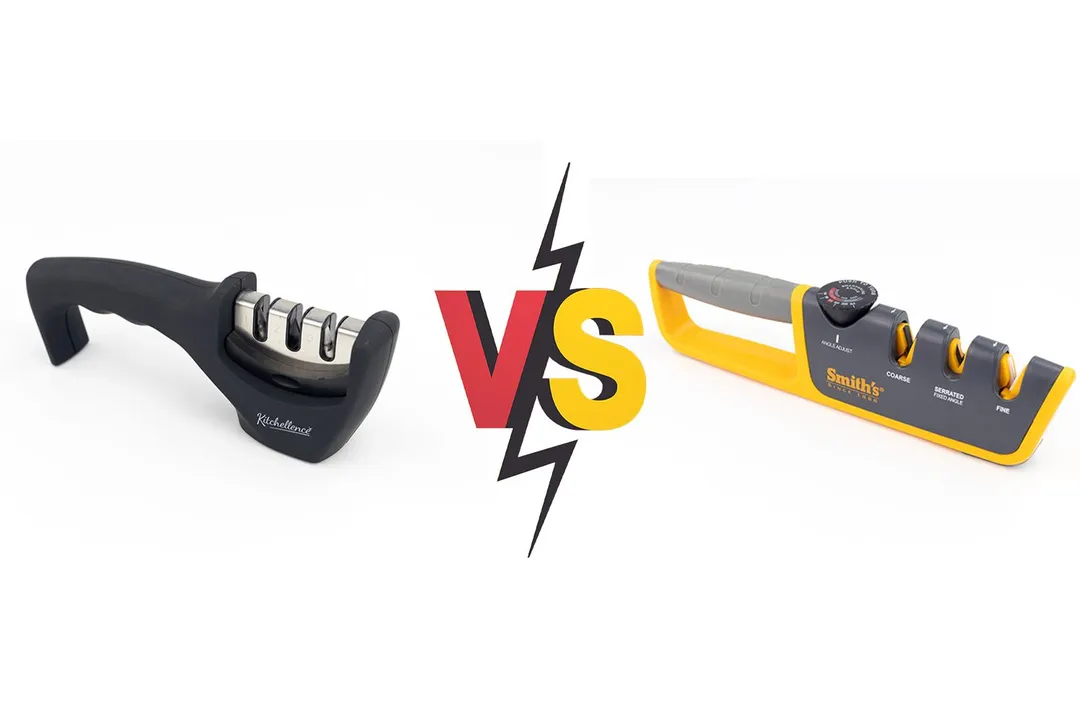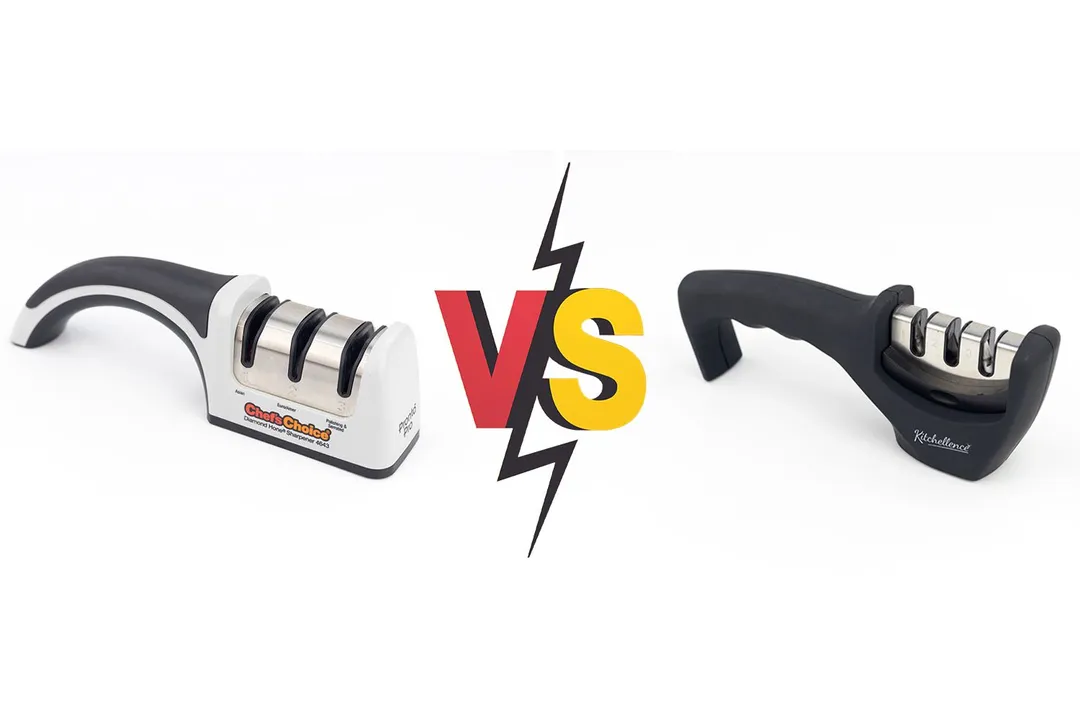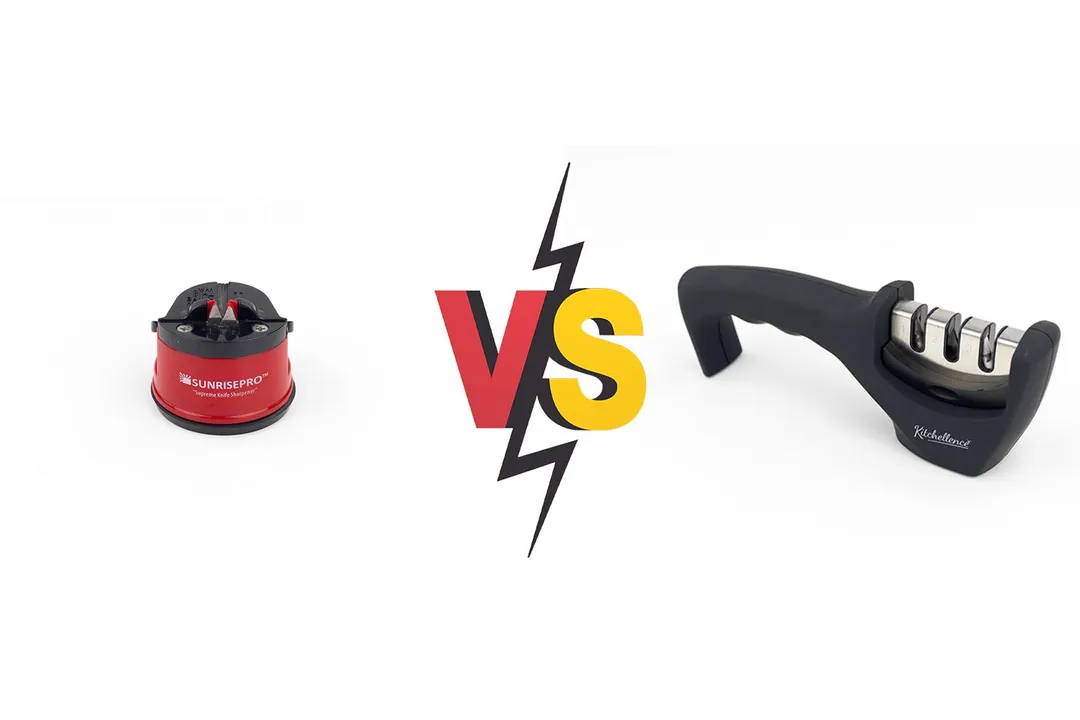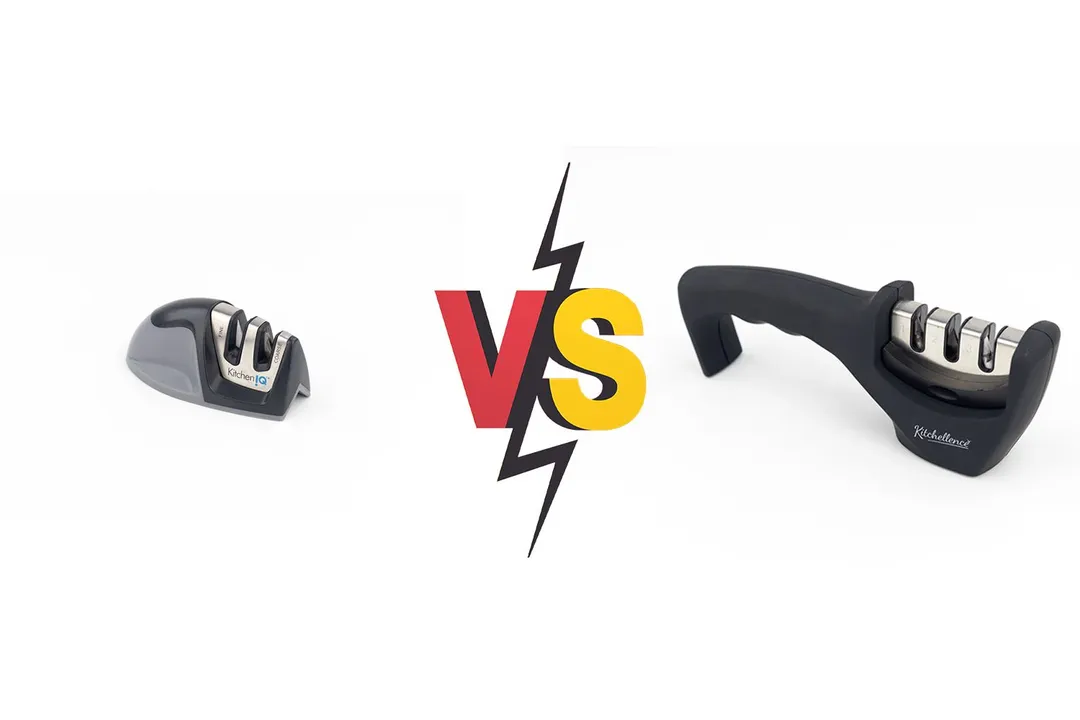Our recommendations are made independently through Research & Testing. We may receive commissions from purchases made via our links.
Kitchellence 3-Stage vs. Zwilling 4-Stage Sharpener Side-by-Side Comparison
It’s easy to pick between the Kitchellence 3-stage and Zwilling 4-stage sharpener: The former offered a much better performance.
Kitchellence 3-Stage
Tested Using Methodology v1.1Zwilling Henckels
Tested Using Methodology v1.1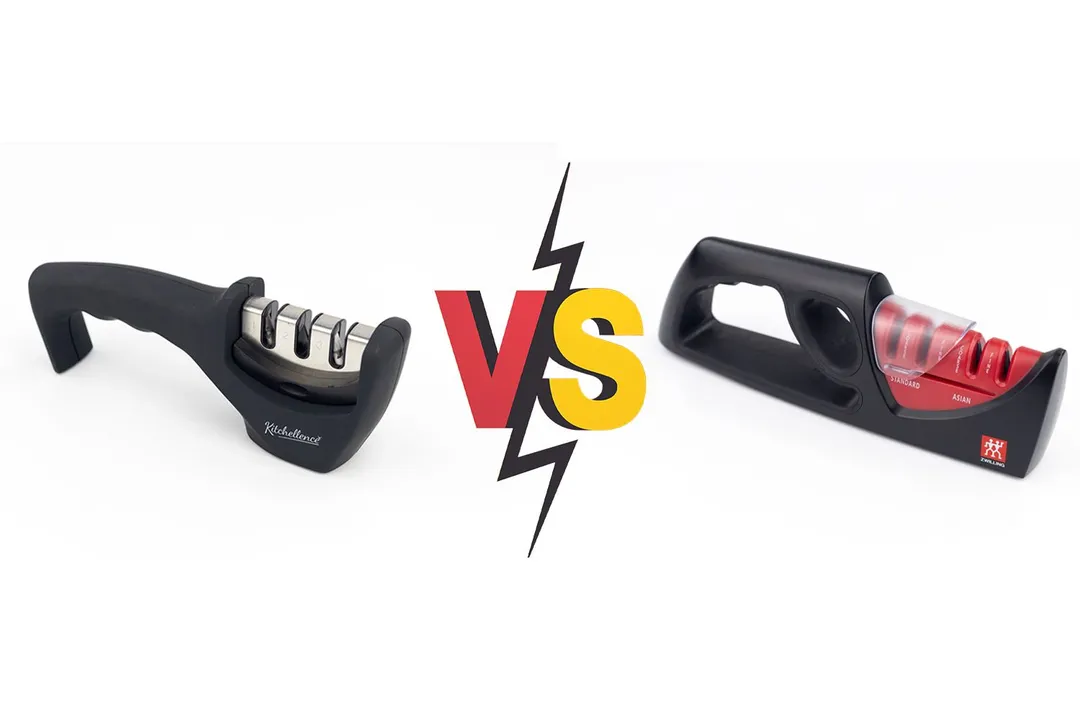
Overall Verdict
The Kitchellence 3-stage sharpener wins hands down in the most critical areas. Whether it’s sharpness, time efficiency, or stability that you’re looking for in a handheld sharpener, it presented itself as the better choice compared to the Zwilling sharpener. The fact that it’s only a fraction of the latter’s price just makes it even more attractive.
The Zwilling’s main appeal is in its ability to sharpen to two different grind angles; however, it took way too long and couldn’t reach the level of sharpness the Kitchellence could. It sports a strong, robust body and an impressive look, but its design was rather gimmicky and didn’t serve well in practice.
Pros & Cons
- Easy to use, intuitive design
- Soft, comfortable finish
- Extra weight near the base for stability
- Affordable price
- Included glove for added safety
- Substantial weight
- Sharpens both Asian and standard knives
- Strong build, high-quality body material
- Slot cover
- Beautiful design
- Tapered base
- Awkward base pad
- Brittle sharpening blades
- Anti-slip pad doesn’t fully cover the base
- Awkward grip
Key Specs
Where to Buy
*You help support HealthyKitchen101's product testing and reviews by purchasing from our retail partners.
Analysis and Test Results
Performance
Sharpening Time to Cut a Lemon
Material Retention
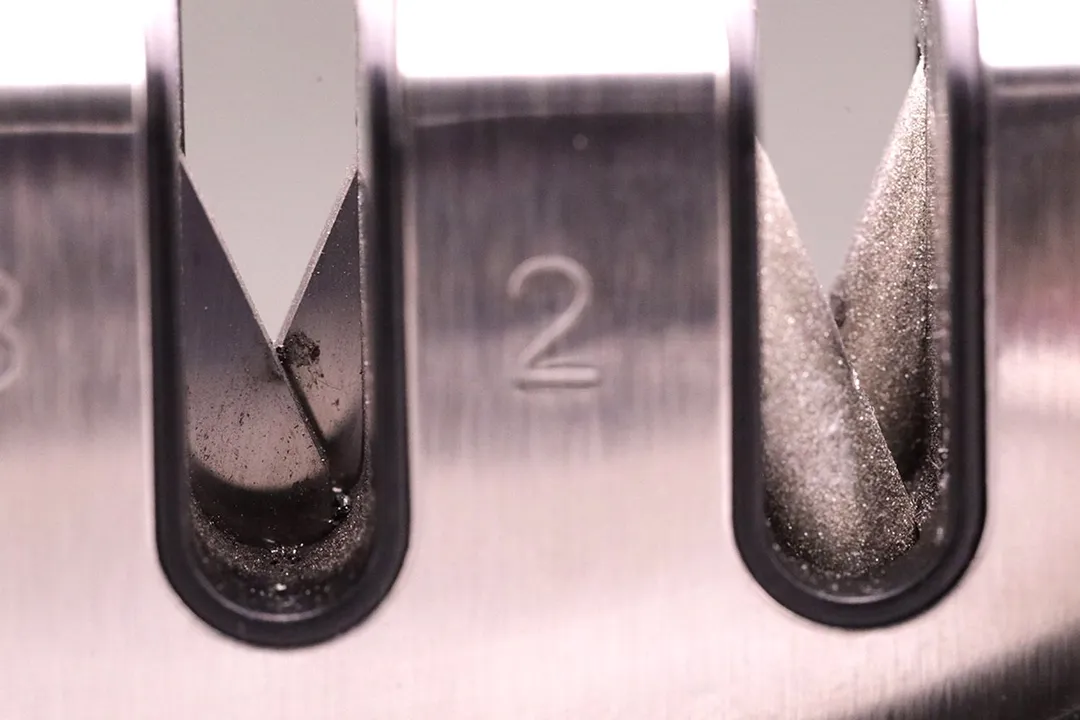

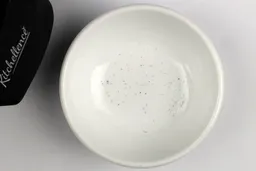
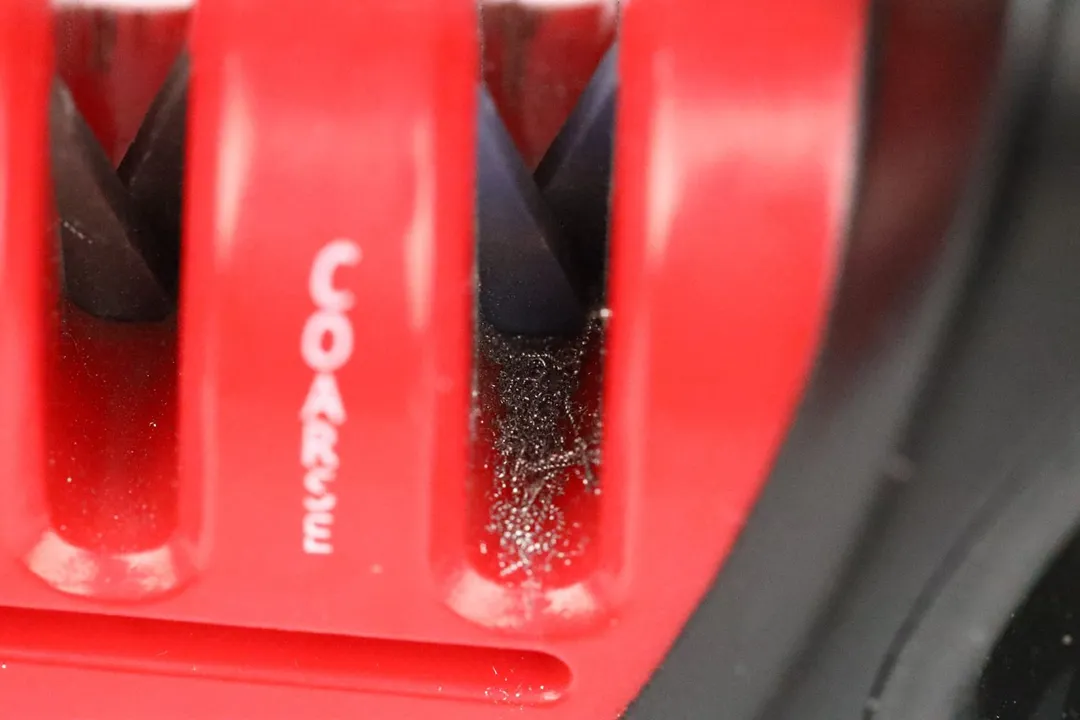
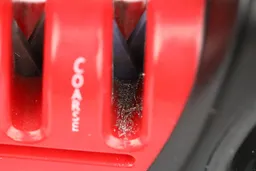
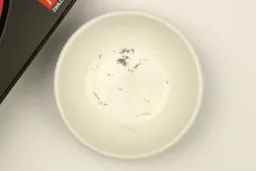
Maximum Sharpness Achieved
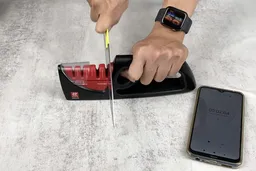
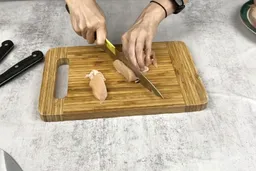
Edge Smoothness
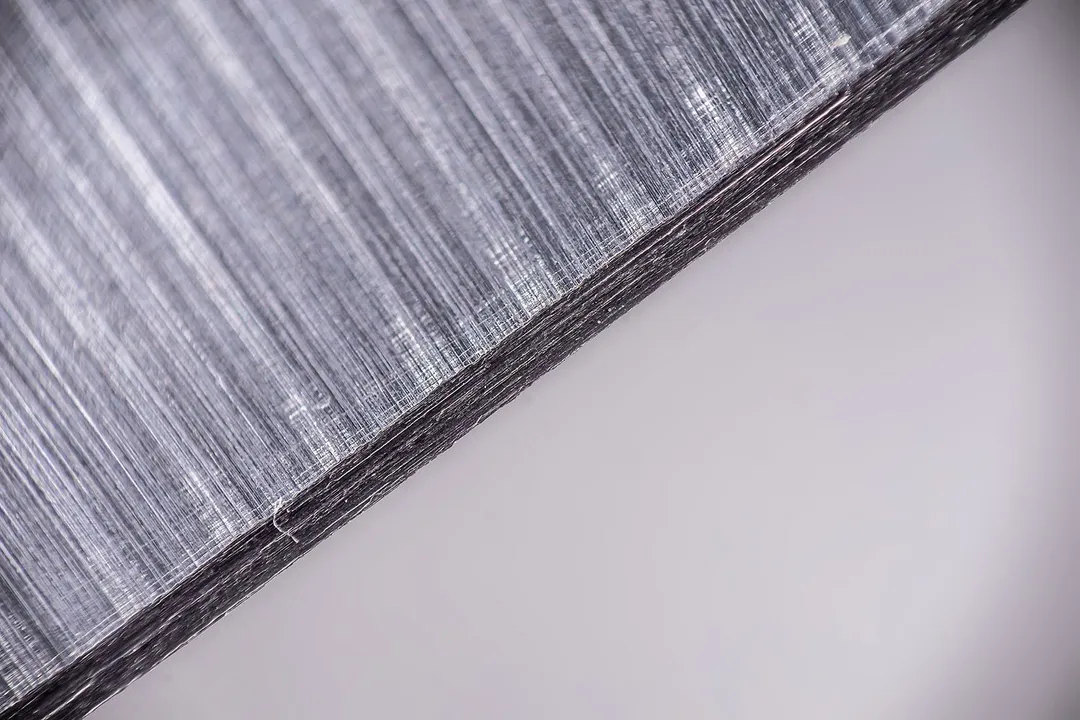
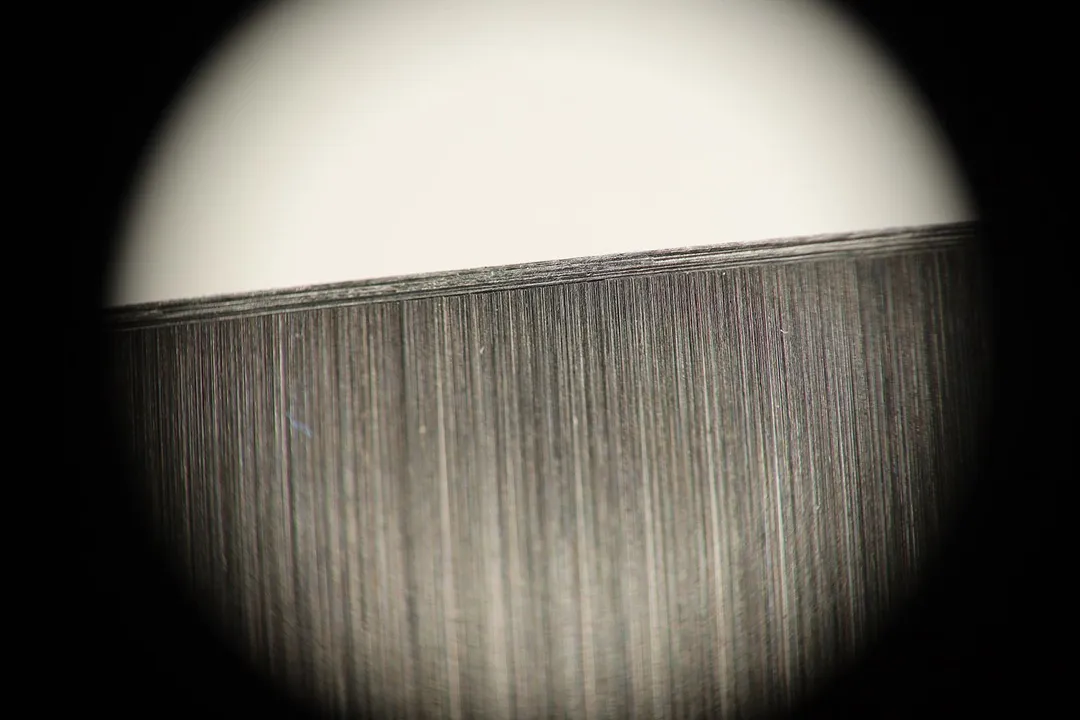
Design
In the Box
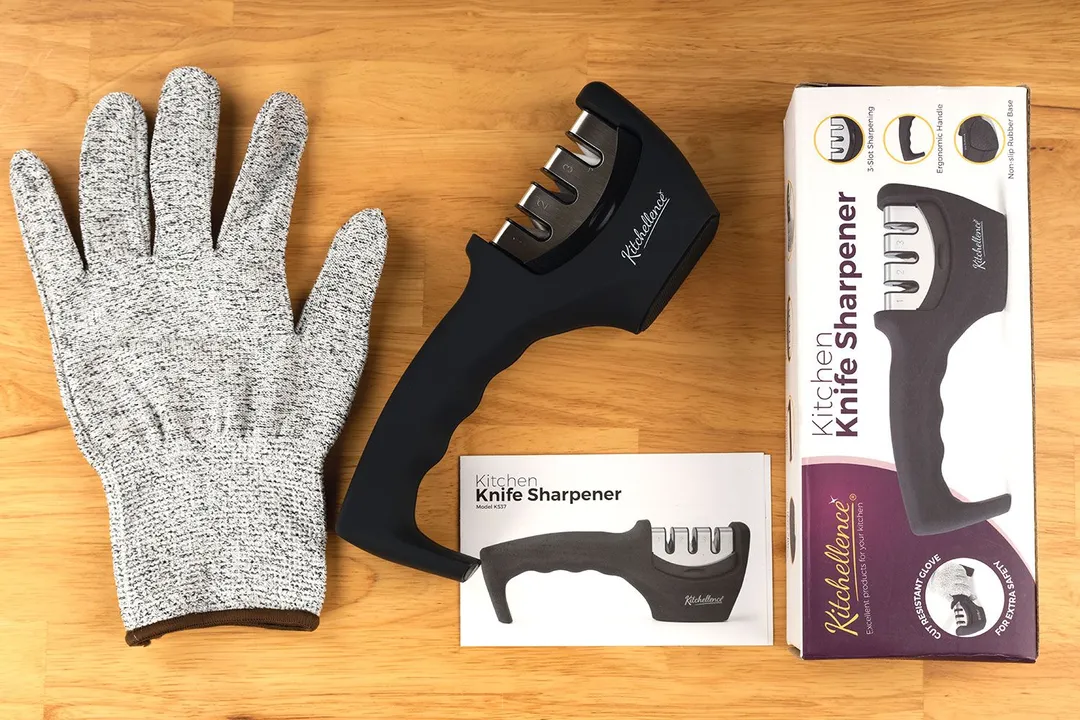
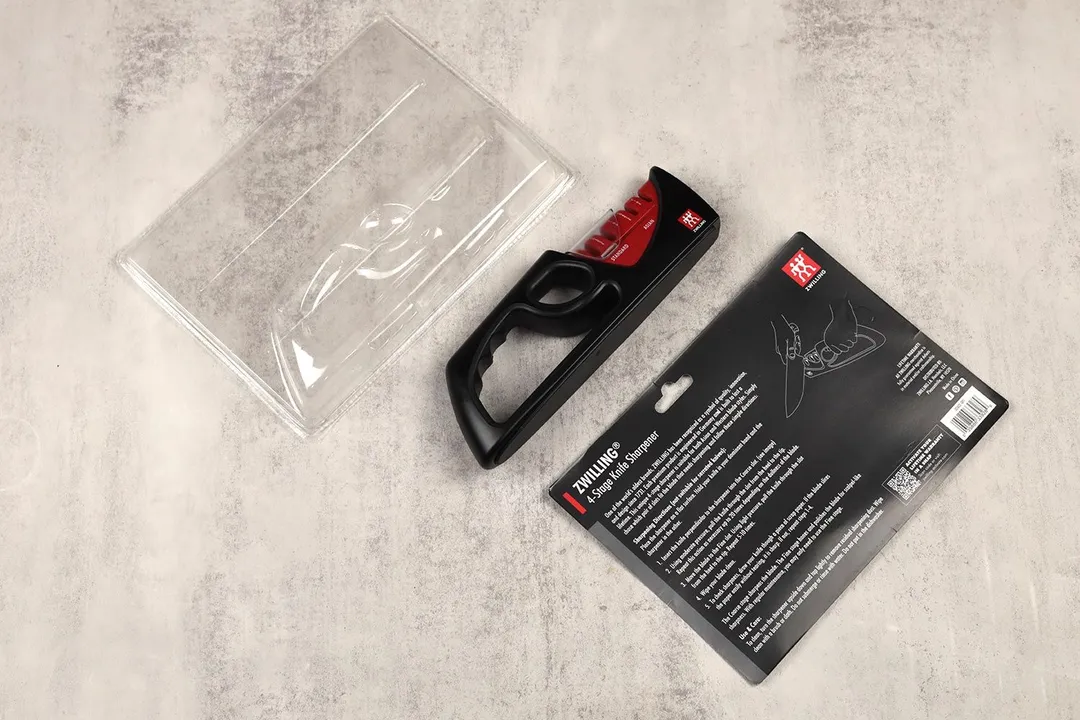
Dimensions
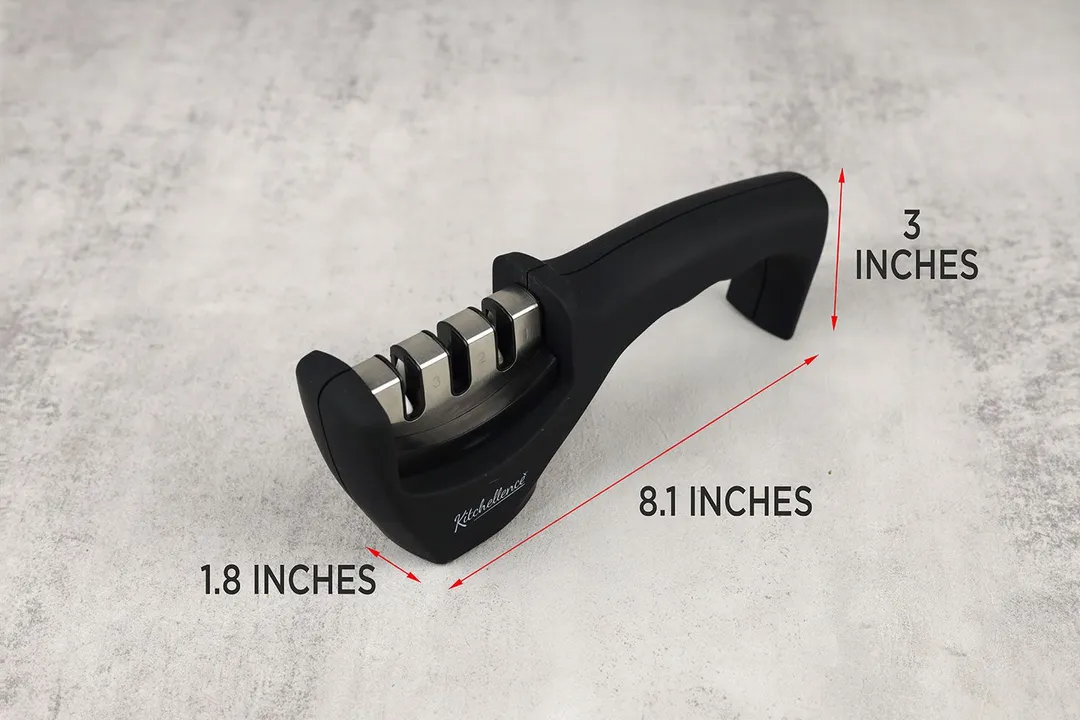

Build Quality
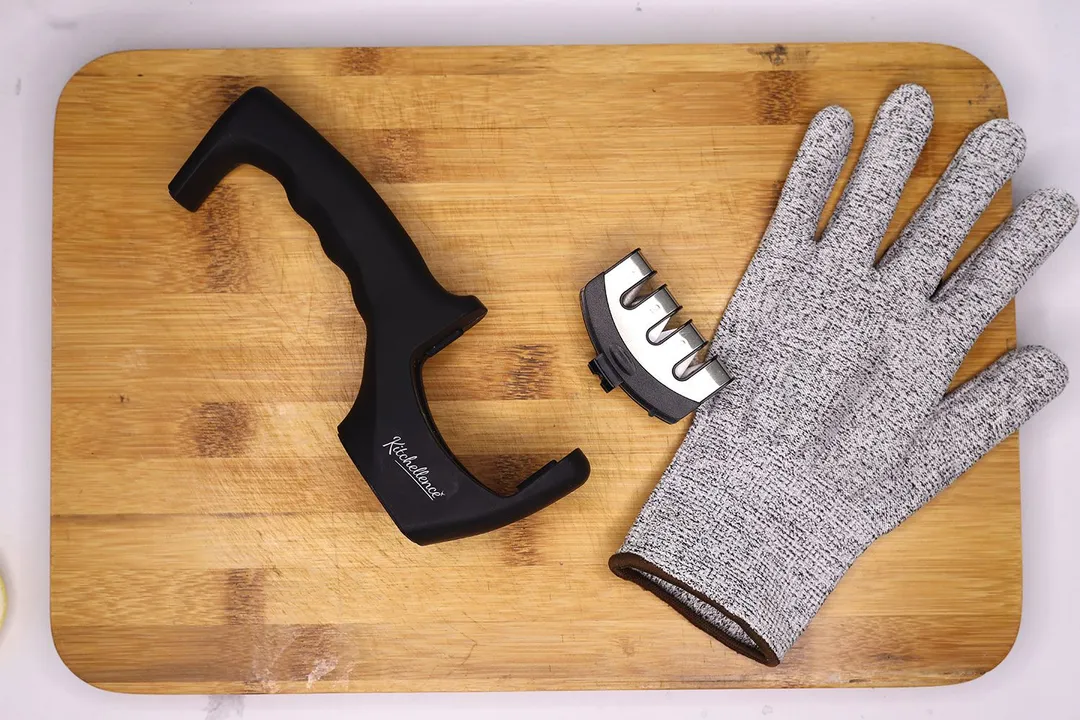
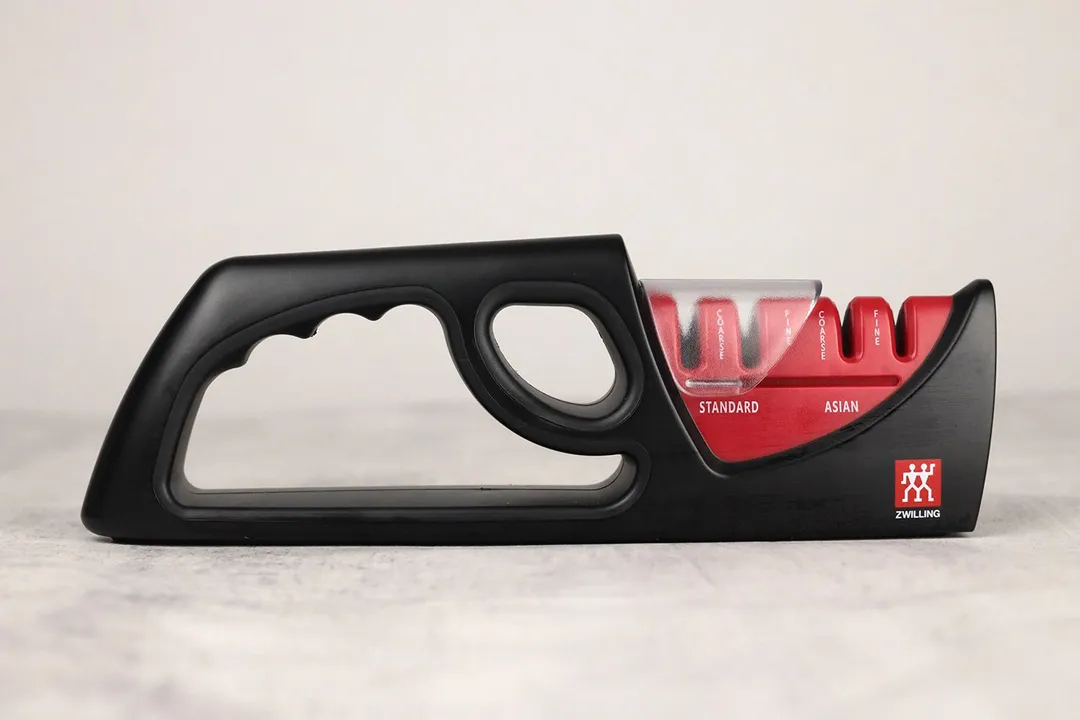
Working Section
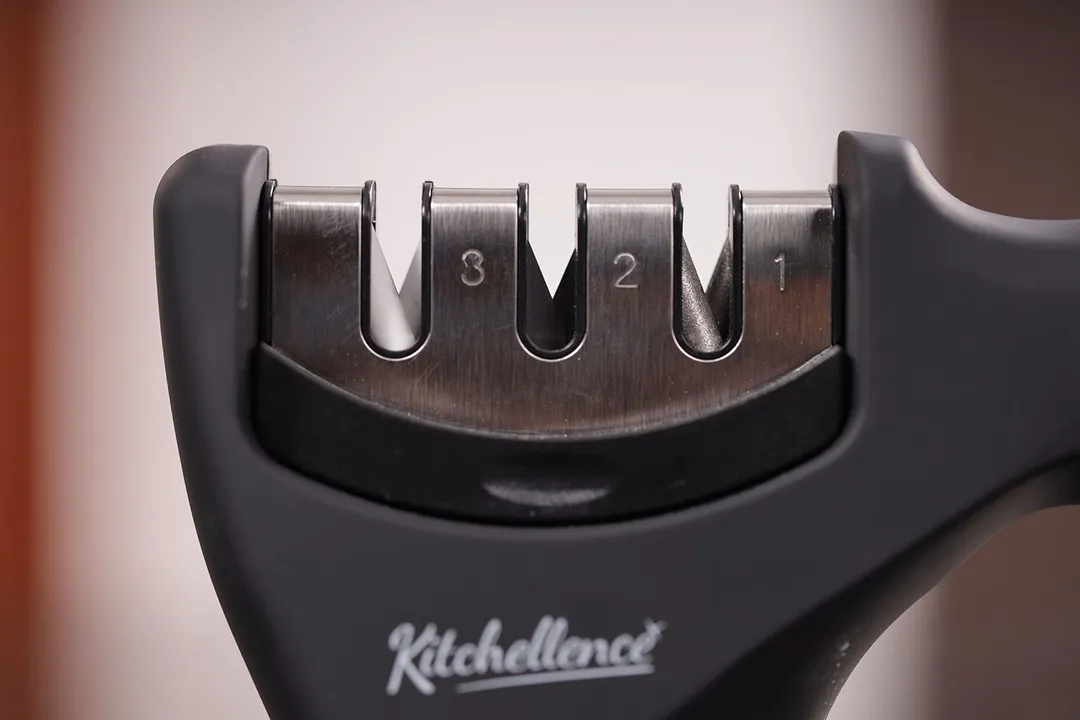
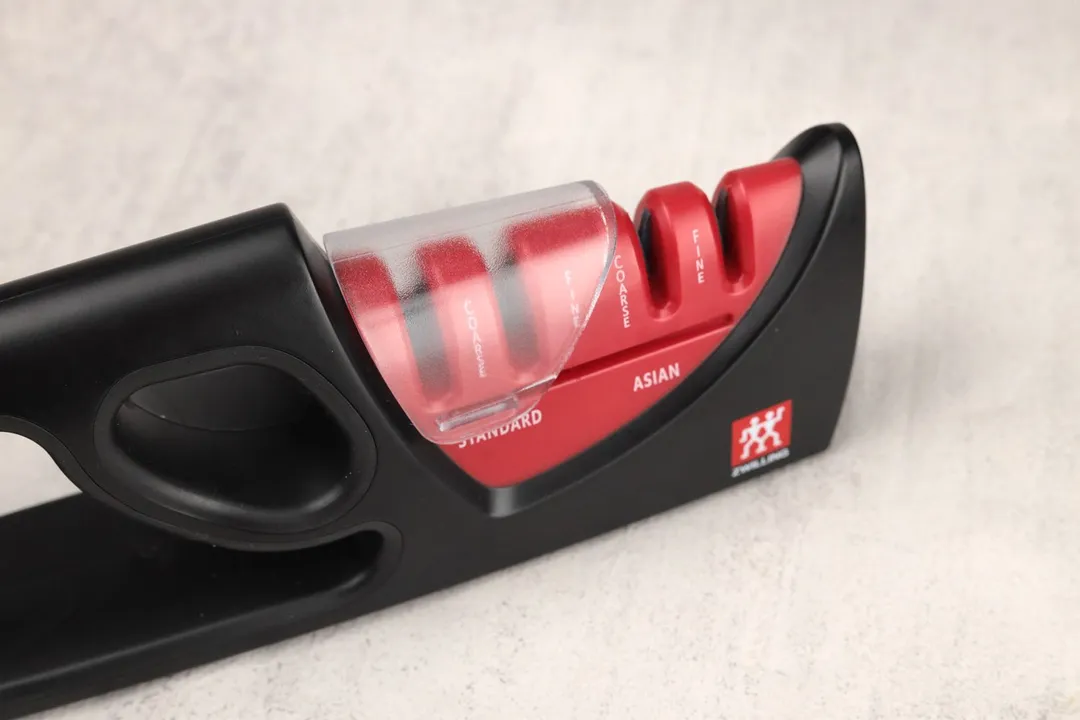
Base
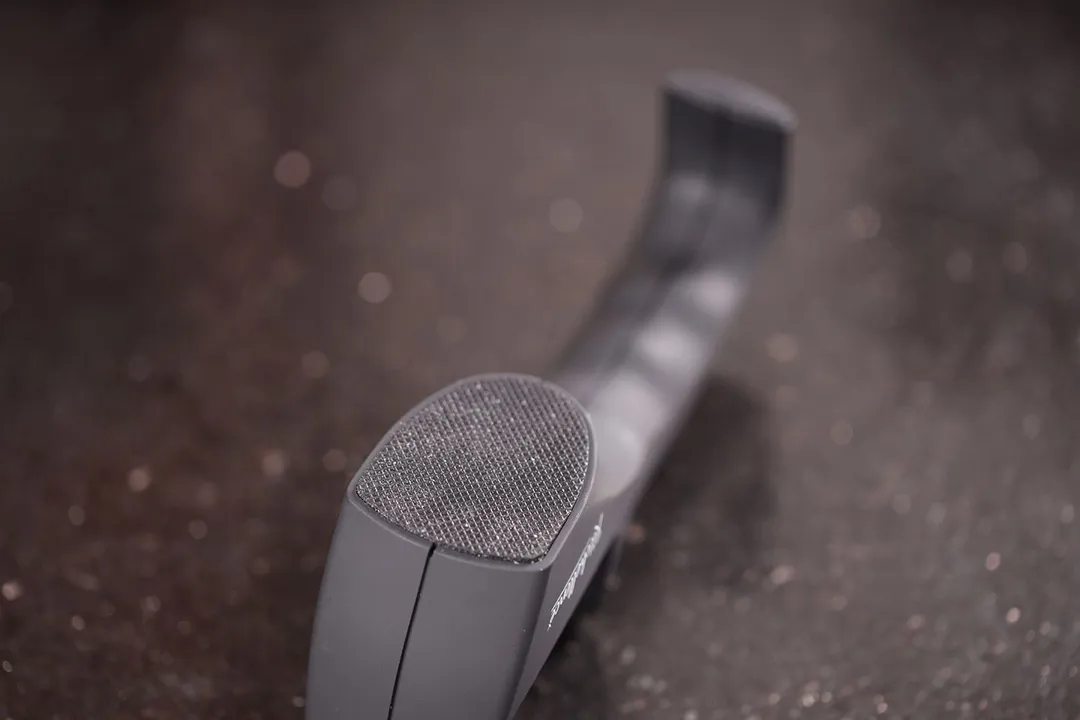

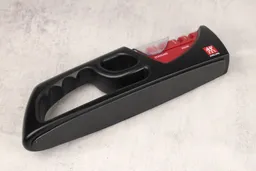

Grip

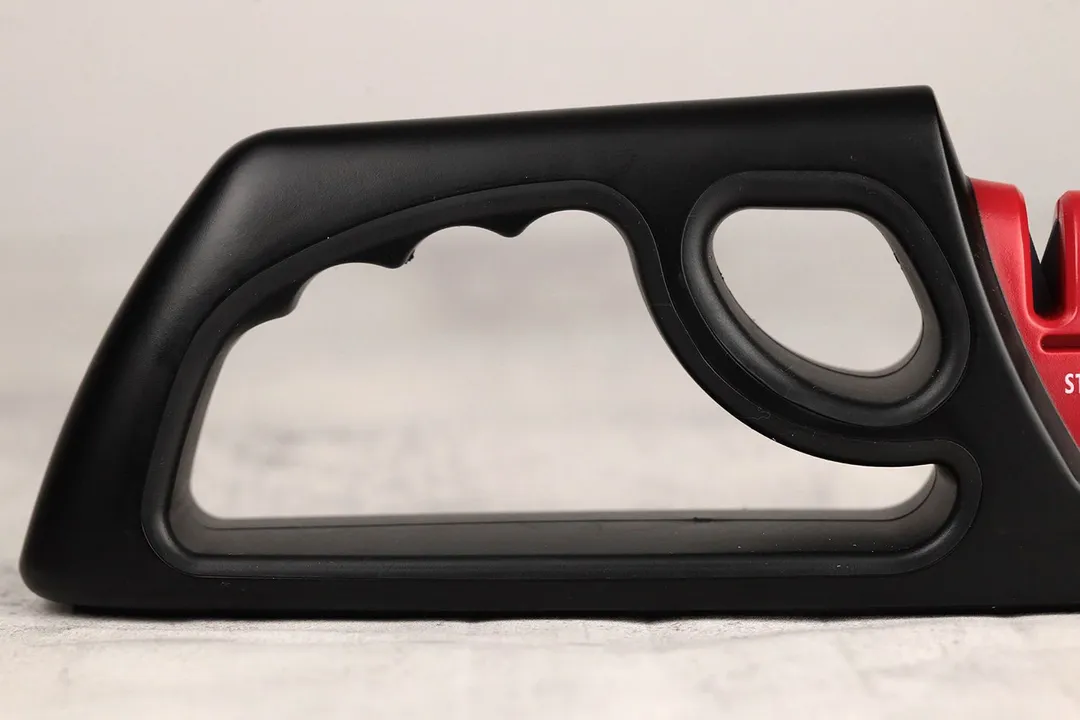

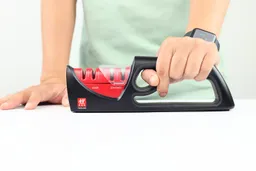
Usability
Slot Arrangement


Insertion
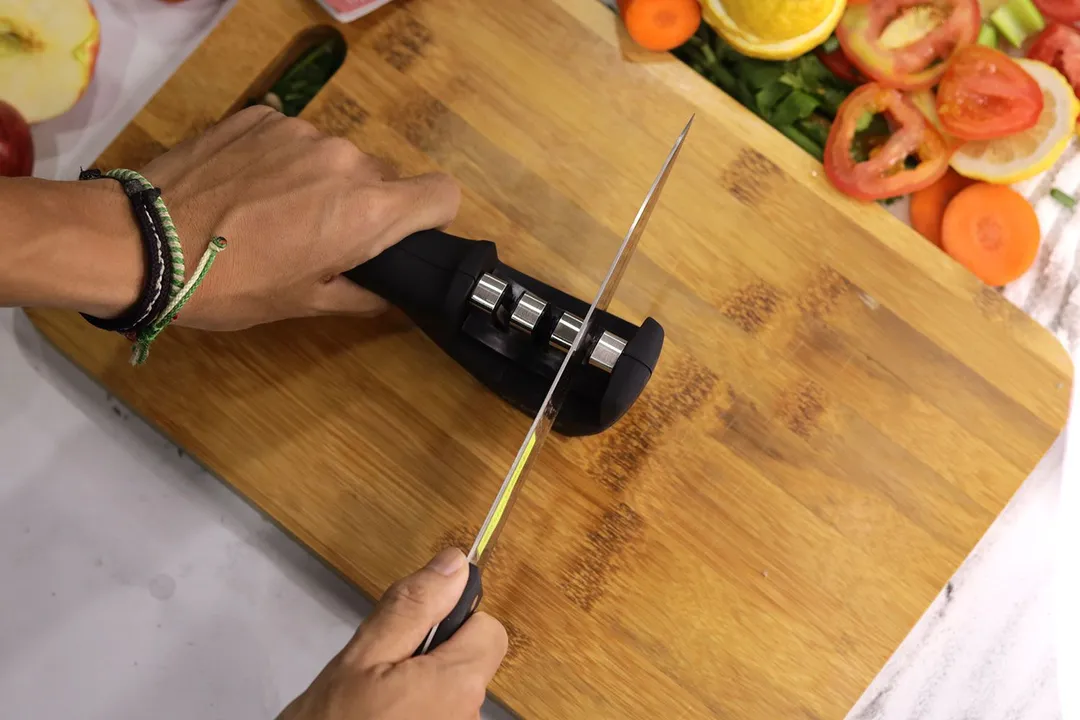
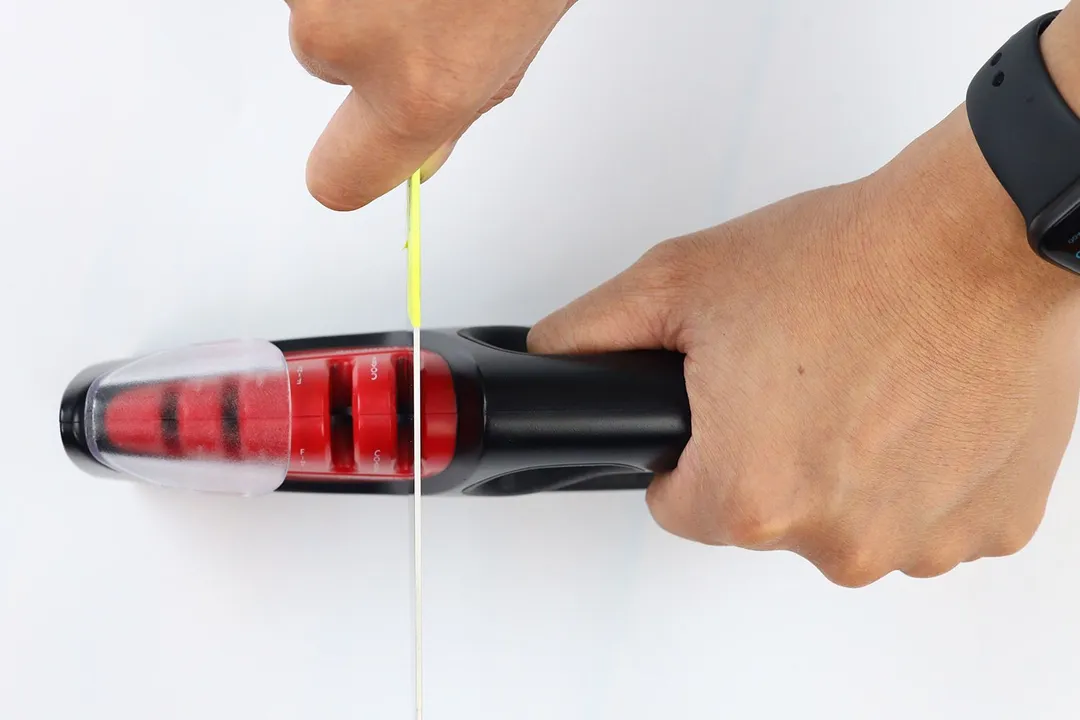
Pulling Through
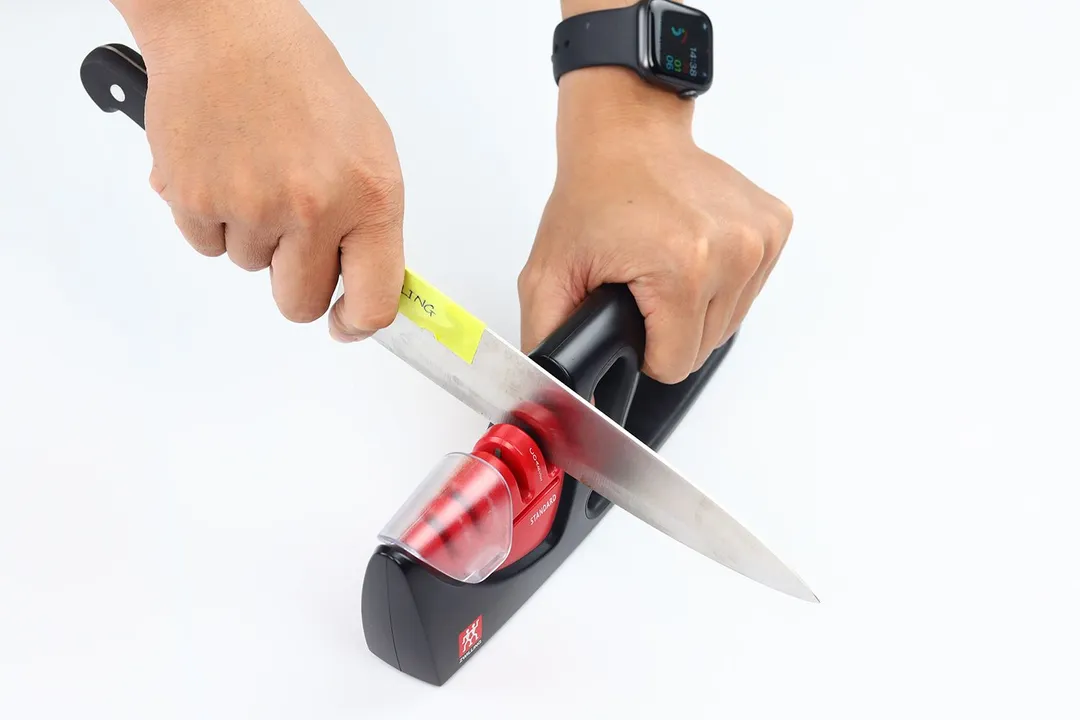
Stability on a Clean Surface

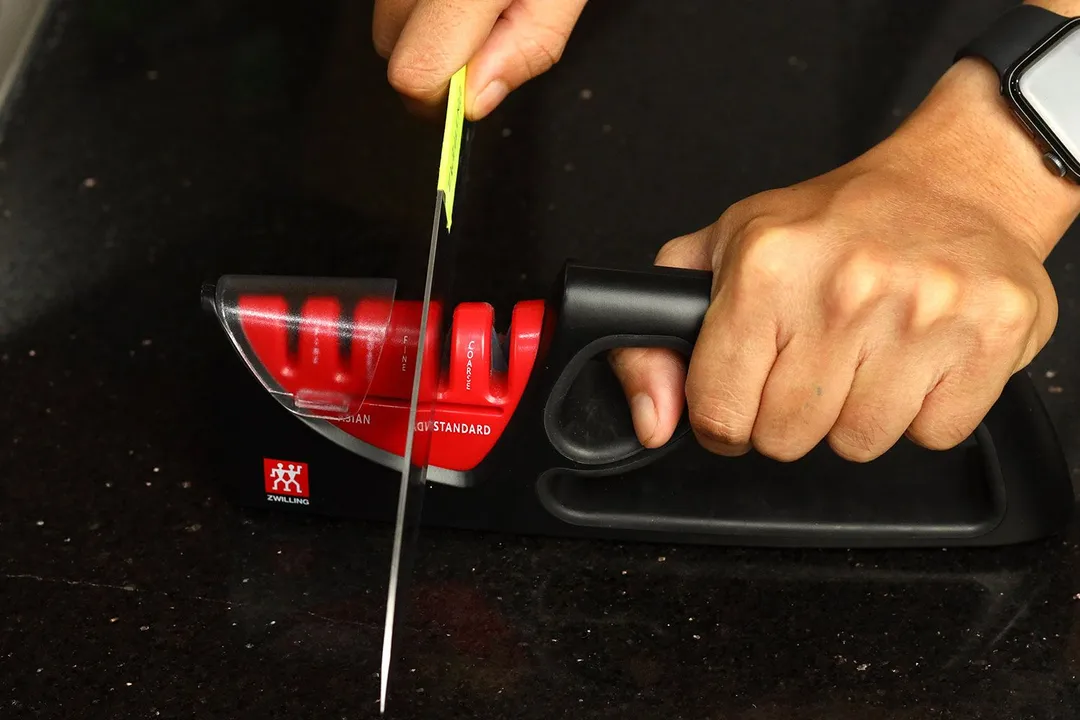
Stability on a Wet and Dirty Surface

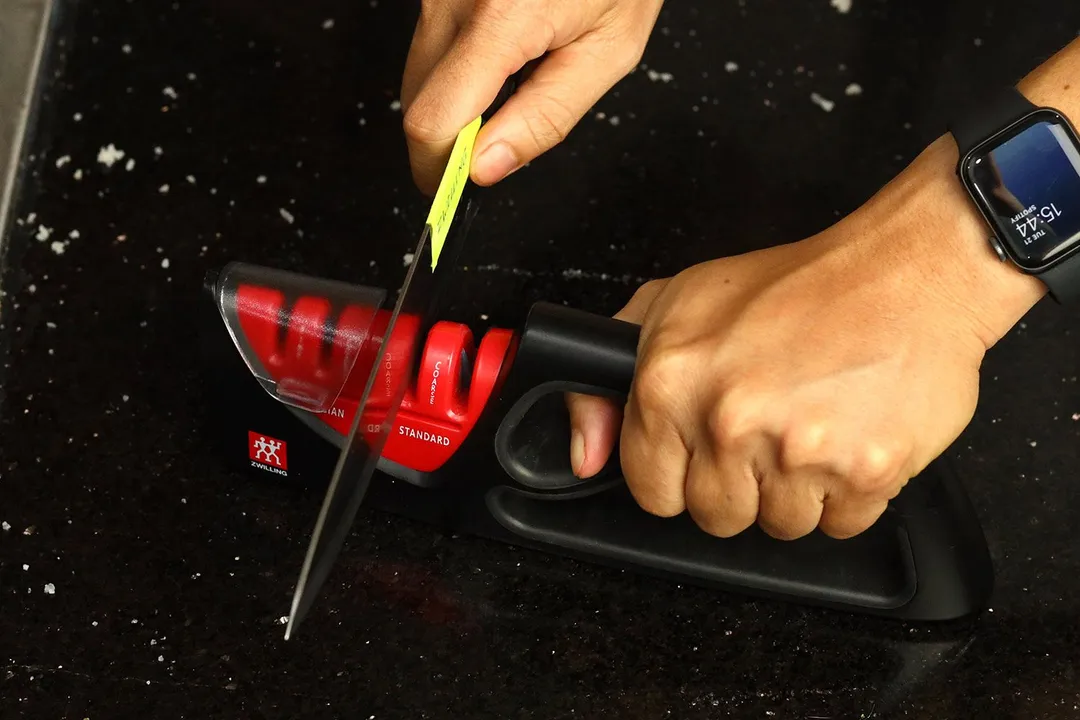
Behind the Comparison
Anh Ngo is a writer with 9 years experience at different media outlets, covering from public news and events to product testing and analysis. At HealthyKitchen101, she works across different departments, communicating closely with its network of writers, editors, and health, tech, and search engine experts to provide a meaningful and pleasant reading experience for visitors.
Lap is Head of the Research, Testing, and Review Team (RTR Team) at HealthyKitchen101.com, where he directs and supervises the testing of kitchen gadgets and appliances.
Nguyen Ntk is a graphic designer, photographer, and videographer whose philosophy centers around respecting and celebrating the beauty of reality. Through his lenses, Nguyen strives to capture the true essence of objects and events, showcasing and highlighting authentic features without distortion or exaggeration.



